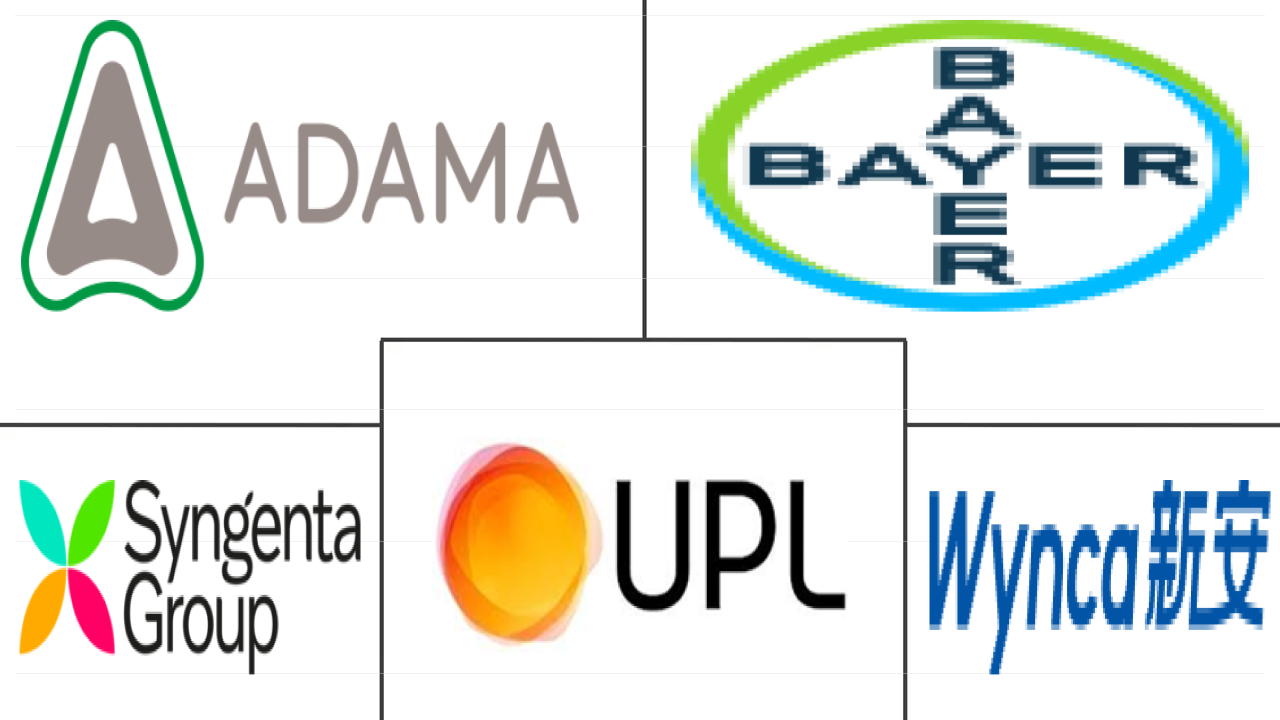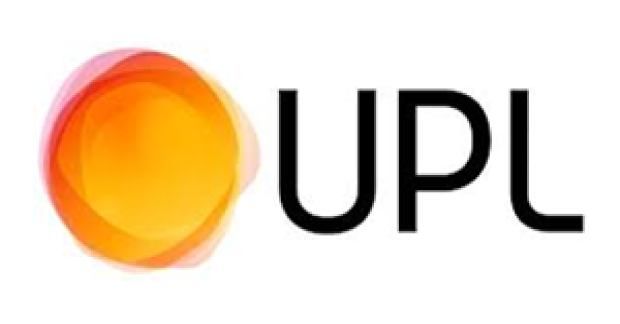Market Size of vietnam insecticide Industry
|
|
Study Period | 2017 - 2029 |
|
|
Market Size (2024) | USD 1.54 Billion |
|
|
Market Size (2029) | USD 1.81 Billion |
|
|
Largest Share by Application Mode | Foliar |
|
|
CAGR (2024 - 2029) | 3.32 % |
|
|
Fastest Growing by Application Mode | Seed Treatment |
Major Players |
||

|
||
|
*Disclaimer: Major Players sorted in no particular order |
Vietnam Insecticide Market Analysis
The Vietnam Insecticide Market size is estimated at 1.54 billion USD in 2024, and is expected to reach 1.81 billion USD by 2029, growing at a CAGR of 3.32% during the forecast period (2024-2029).
1.54 Billion
Market Size in 2024 (USD)
1.81 Billion
Market Size in 2029 (USD)
6.15 %
CAGR (2017-2023)
3.32 %
CAGR (2024-2029)
Largest Segment by Application Mode
58.18 %
value share, Foliar, 2023
The foliar mode is more effective in controlling pests in prominent crops, such as leaffolder caterpillars in rice and fall armyworms in maize, and increasing crop yield.
Largest Segment by Crop Type
64.71 %
value share, Grains & Cereals, 2023
Grains and cereals are more susceptible to various pests and have a larger cultivation area compared to other crops. The productivity of staple food crops needs to be increased.
Fastest-Growing Segment by Crop Type
3.52 %
Projected CAGR, Fruits & Vegetables, 2024-2029
The market is growing due to the increasing demand for the country's fruits and vegetables in international markets, as well as crop losses caused by pest attacks.
Leading Market Player 1
5.50 %
market share, UPL Limited, 2022

Syngenta Group is focused on product innovation and has partnered with Vietnam Fumigation Joint Stock Company to provide efficient insecticide products to farmers.
Leading Market Player 2
4.62 %
market share, Syngenta Group, 2022

ADAMA invested in enhancing its R&D capabilities to help expand and accelerate its own research and development in the field of plant protection.
Frequent crop losses due to stem borers, armyworms, and aphids increase the usage of insecticides
- Vietnamese farmers primarily rely on insecticides to combat insect pests that pose a threat to major crops. Depending on the specific pests and crops, farmers adopt suitable application methods to control the pests effectively across a wide range of crops. This approach allows them to mitigate the damage caused by pests and protect their agricultural produce.
- In 2022, the market was largely dominated by the foliar application of insecticides, which held a significant share of 58.1%. This dominance could be attributed to the numerous benefits associated with this method. Directly applying insecticides to the leaves of plants enables rapid and efficient action against targeted pests. Moreover, the country's prominent crops, such as rice and maize, are highly susceptible to insect pests like rice stem borers, armyworms, and aphids. Through the utilization of foliar insecticide applications, farmers can effectively control and manage pest populations. This advantageous approach has contributed to the growing adoption of foliar applications in the country.
- In 2022, seed treatment emerged as another significant mode of applying insecticides, representing a market share of 16.7%. This method involves treating seeds with suitable insecticides, which proves effective in controlling insect larvae and nematodes that significantly impact crop growth during the early stages. The growing adoption of this approach can be attributed to the latest advancements in seed treatment insecticides, enabling effective control of pests both above and below the ground.
- Other application modes used by the farmers include chemigation, fumigation, and soil treatment. Increasing pest infestations and the need for higher productivity are expected to drive the market at a CAGR of 3.3%.
Vietnam Insecticide Industry Segmentation
Chemigation, Foliar, Fumigation, Seed Treatment, Soil Treatment are covered as segments by Application Mode. Commercial Crops, Fruits & Vegetables, Grains & Cereals, Pulses & Oilseeds, Turf & Ornamental are covered as segments by Crop Type.
- Vietnamese farmers primarily rely on insecticides to combat insect pests that pose a threat to major crops. Depending on the specific pests and crops, farmers adopt suitable application methods to control the pests effectively across a wide range of crops. This approach allows them to mitigate the damage caused by pests and protect their agricultural produce.
- In 2022, the market was largely dominated by the foliar application of insecticides, which held a significant share of 58.1%. This dominance could be attributed to the numerous benefits associated with this method. Directly applying insecticides to the leaves of plants enables rapid and efficient action against targeted pests. Moreover, the country's prominent crops, such as rice and maize, are highly susceptible to insect pests like rice stem borers, armyworms, and aphids. Through the utilization of foliar insecticide applications, farmers can effectively control and manage pest populations. This advantageous approach has contributed to the growing adoption of foliar applications in the country.
- In 2022, seed treatment emerged as another significant mode of applying insecticides, representing a market share of 16.7%. This method involves treating seeds with suitable insecticides, which proves effective in controlling insect larvae and nematodes that significantly impact crop growth during the early stages. The growing adoption of this approach can be attributed to the latest advancements in seed treatment insecticides, enabling effective control of pests both above and below the ground.
- Other application modes used by the farmers include chemigation, fumigation, and soil treatment. Increasing pest infestations and the need for higher productivity are expected to drive the market at a CAGR of 3.3%.
| Application Mode | |
| Chemigation | |
| Foliar | |
| Fumigation | |
| Seed Treatment | |
| Soil Treatment |
| Crop Type | |
| Commercial Crops | |
| Fruits & Vegetables | |
| Grains & Cereals | |
| Pulses & Oilseeds | |
| Turf & Ornamental |
Vietnam Insecticide Market Size Summary
The Vietnam insecticide market is experiencing steady growth, driven by the increasing reliance of farmers on insecticides to protect major crops from pest infestations. The market is characterized by a diverse range of application methods, with foliar applications being the most dominant due to their effectiveness in rapidly controlling pests on crops like rice and maize. Seed treatment is also gaining traction as a significant method for pest control, particularly for managing insect larvae and nematodes during the early stages of crop growth. The market's expansion is further supported by advancements in pest control technologies and the growing adoption of genetically engineered corn varieties, which have influenced insecticide consumption patterns.
Vietnam's insecticide market is heavily dependent on imports for active ingredients, with major supplies coming from countries like China, Germany, and India. The market is fragmented, with a few key players holding a small share, and is influenced by factors such as pest incidence, currency exchange rates, and import tariffs. The demand for insecticides is expected to rise due to the increasing prevalence of pests, changing weather conditions, and the need for higher agricultural productivity. Partnerships and technological advancements among major companies are also contributing to the development of more effective and eco-friendly pest management solutions, further shaping the market landscape.
Vietnam Insecticide Market Size - Table of Contents
-
1. MARKET SEGMENTATION (includes market size in Value in USD and Volume, Forecasts up to 2029 and analysis of growth prospects)
-
1.1 Application Mode
-
1.1.1 Chemigation
-
1.1.2 Foliar
-
1.1.3 Fumigation
-
1.1.4 Seed Treatment
-
1.1.5 Soil Treatment
-
-
1.2 Crop Type
-
1.2.1 Commercial Crops
-
1.2.2 Fruits & Vegetables
-
1.2.3 Grains & Cereals
-
1.2.4 Pulses & Oilseeds
-
1.2.5 Turf & Ornamental
-
-
Vietnam Insecticide Market Size FAQs
How big is the Vietnam Insecticide Market?
The Vietnam Insecticide Market size is expected to reach USD 1.54 billion in 2024 and grow at a CAGR of 3.32% to reach USD 1.81 billion by 2029.
What is the current Vietnam Insecticide Market size?
In 2024, the Vietnam Insecticide Market size is expected to reach USD 1.54 billion.

